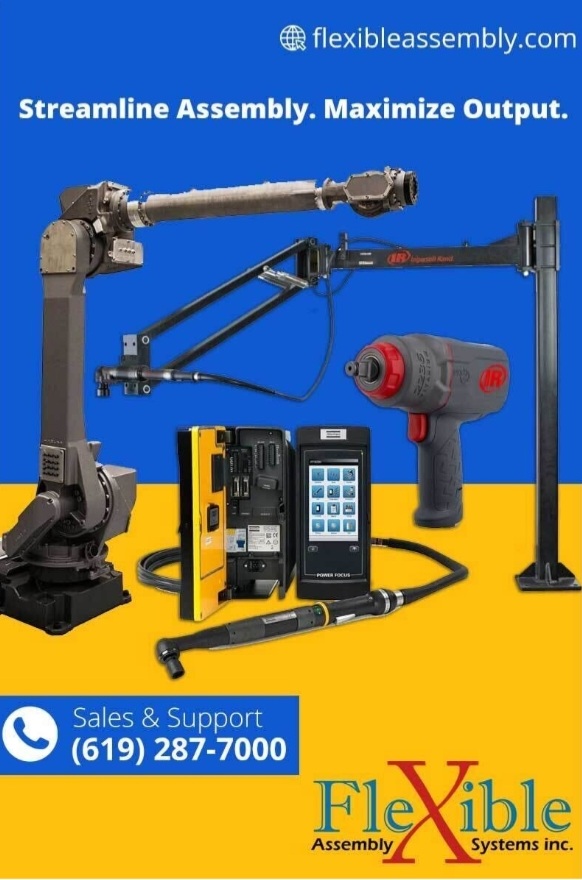Securing parts requires the right torque – too little leads to loose joints, while over tightening stresses materials. Torque testers and screwdrivers fill vital roles across applications from delicate electronics to hulking marine engines.
This guide offers a comprehensive overview spanning key torque principles, specialized capabilities of manual and automatic instruments, proper calibration procedures for accuracy, leveraging torque data to enhance quality control, and unparalleled solutions from Flexible Assembly Systems.
What Is Torque?
Whether tightening lug nuts or a piano’s tuning pegs, torque measures the rotational force in action. Greater force from bigger muscles or tools exerts more torque – think stiff bolts requiring heftier wrenches. Torque’s effectiveness also rises by using force farther from the pivot center – a long wrench gripping far from the nut generates tremendous tightening from little muscular effort.
Standard units used internationally are:
• Pound-feet or foot-pounds (lb-ft or ft-lb)
• Newton-meters (N-m)
• Kilogram meter (kgf-m)
Torque demand varies enormously based on factors like materials, friction, fastening size and component function. Guidance tiles on spacecraft endure less than 5 N-m while giant marine propellers need over 500,000!
Across industries and applications, appropriate torque ensures:
• Reliable securing without stripping threads
• Maximizing strength of joints
• Avoiding unnecessary stresses
• Accurately aligning components
• Maintaining precision adjustments
Now let’s explore available torque tools.
Torque Screwdriver Types
Manual torque screwdrivers allow precisely tightening fasteners between around 3 to 100 pound feet. They work manually via ratchets, gears and calibrated springs. Common types include:
Dial Screwdrivers
Best for low torque applications, users set the exact torque reading on a dial/scale using an adjustment knob. Great visual feedback aids consistently achieving set torque spec.
Preset Torque Screwdrivers
Pre-calibrated at fixed torque values without adjustment, ensuring error-proof tightening at specified ratings. Must buy multiple tools for varying torque needs.
Adjustable Torque Screwdrivers
Single tool with variable torque settings across designated range. Allows tweaking torque force as needed with proper display gauges. Very versatile.
Torque Screwdriver Buyer’s Guide
Consider ergonomics like grip and size which impact comfort and control. Ratcheting models allow setting torque direction. Storage cases protect precision calibration. Optics like flashing lights or buzzers indicate achieving preset torque levels.
Automated Torque Testers
Sophisticated programmable instruments automatically tighten fasteners while measuring, documenting and analyzing resulting torque data. Advance capabilities like:
• Testing range of mini N-m up to one million N-m
• Computerized profiles, analysis and data transfers
• Networking multiple testers
• Custom test jigs and fixtures for unique parts
• Pass/Fail alerts through indicator lights or buzzers
• Portable and benchtop variants
Rotary Torque Testers
Motors precisely rotate until preset torque target is achieved. Best for testing maximum torque and determining point of component failure.
Inline Torque Testers
Hydraulics apply tension until desired torque gets reached. Well-suited for product testing and calibrating tools.
Dual Preload Analyzers
Special testers measuring Preload (axial tension generated on fastener) and torque simultaneously for critical applications.
Consider torque accuracy needed, speed, any special grips, tooling connections, software needs and budget while selecting automated testers.
Calibrating and Maintaining Torque Tools
All torque instruments require occasional calibration to maintain accuracy. Torque screwdrivers and testers use internal components with elastic ranges which can drift over time and use. Ensure calibration aligns with ISO 6789 standard.
Two techniques check calibration:
1. Reference Torque Calibration
Verify against calibrated measuring equipment traceable to recognized metrological standards.
2. Physical Torque Calibration
Examine measurement deviation by applying torque directly. Requires specialized calibration rigs with loading cells, torque transmission shafts etc.
Regularly examine tools for dirt or damage influencing readings. Lubricate ratcheting screwdriver pawls and gear teeth carrying torque load. Replace worn parts like plastic tips or fast wearing steel grip bushings immediately.
Specialized calibration service companies handle maintenance, repairs and adjustments to restore torque wrench performance.
Leveraging Torque Data
Modern torque analyzers record extensive torque data including individual readings, graphs, batch analysis, statistical process control and test reporting.
Data enables:
• Preventing product failures through design changes
• Maintaining appropriate process standards
• Identifying training gaps that influence product quality
• Assigning accountability via digital records
• Monitoring tool and machine performance
Flexible Assembly Systems Torque Solutions
Flexible Assembly Systems’ torque testers lead various industries ranging from formula one racing teams to offshore oil rigs over five decades. Their responsive customer service and unbeatable speed, accuracy and intuitive touchscreen software keeps iconic brands as loyal clients.
Adjustable manual Click-Torque screwdrivers allow tool-free setting changes for simplified operation. Torque can get precisely set without test equipment through its reliable scale. An easy push reset button restores factory preload for responsive tactile tightening control across repeating applications.
In conclusion, properly calibrated torque tools like torque testers and screwdrivers available through Flexible Assembly Systems combined with analyzing emerging torque data enables cost-effectively keeping mechanical equipment safely operational for extended durations. Investing in the right torque measurement and tightening systems promises substantial long term savings from enhanced quality, performance and safety.
Read more: 5 Must Have WooCommerce Plugins for Custom Order Statuses



